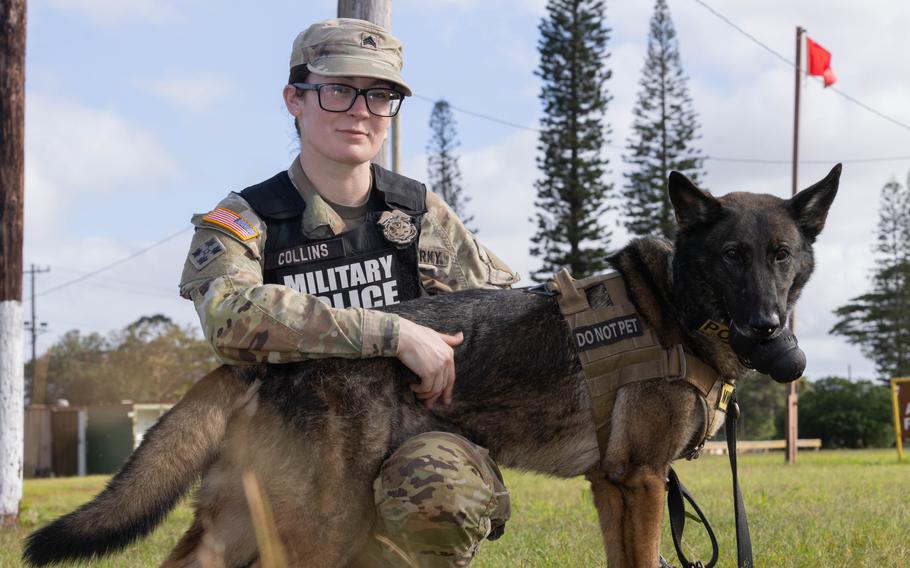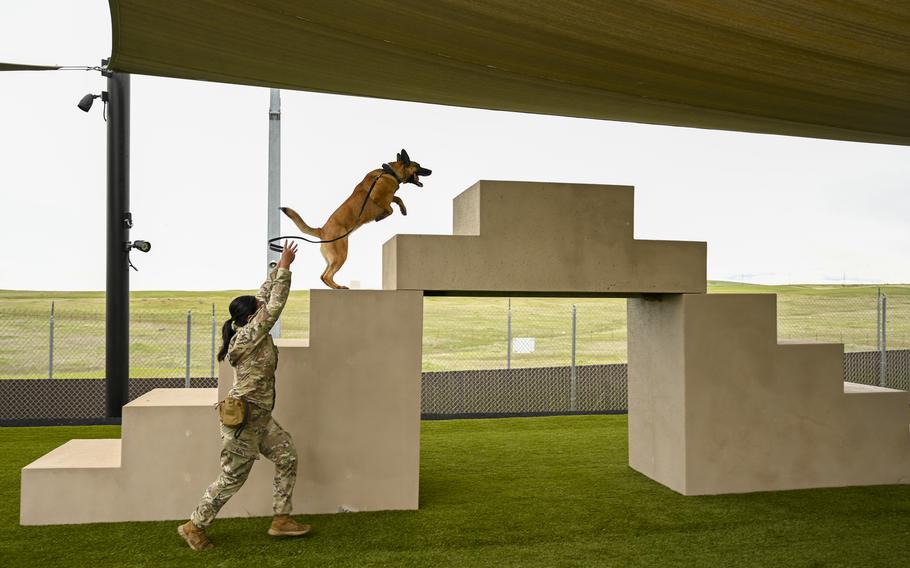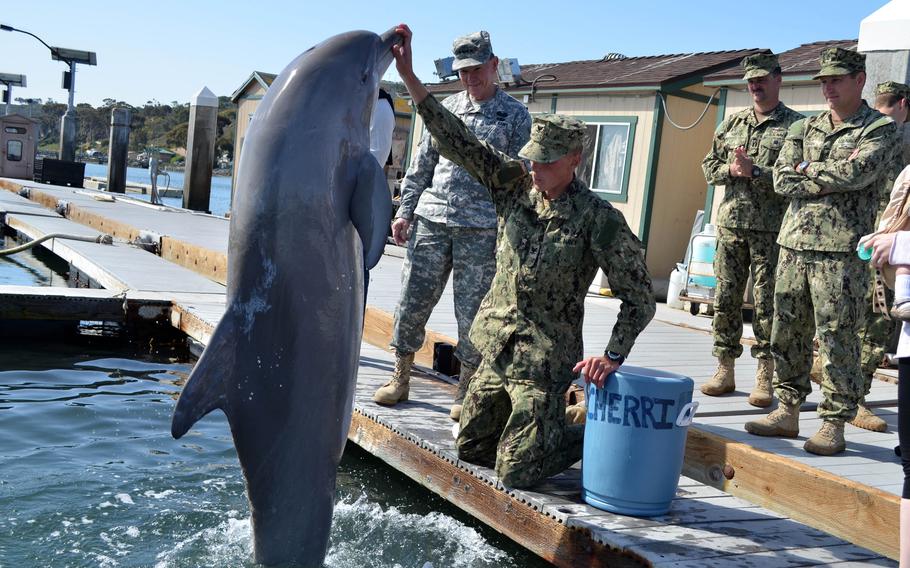
U.S. Army Sgt. Stacey Collins a military working dog handler, poses with U.S. Army military working dog Hugo, both with the 8th Military Police Brigade, 8th Theater Sustainment Command, Feb. 07, 2024, Schofield Barracks, Hawaii. (Tristan Moore/U.S. Army)
Washington is going to the dogs — for real this time.
As of 2022, the federal government employed 5,159 German shepherds, Belgian Malinois, beagles, Jack Russell terriers and other forms of everyone’s favorite furry friend. Another 421 worked as canine contractors.
The job descriptions for these four-legged feds range from the sublime — 31 help “park rangers traverse Denali National Park in winter” — to the subprime: Others “detect waterfowl feces” infected with bird flu.
We found the work of these politically connected canines described in magical detail in a report from the Government Accountability Office (GAO), which apparently is taking its role as government watchdog literally.
The report — which addresses the working conditions of working dogs — somehow escaped our noticed until we were scooped by our friends at USA Facts, a data evangelism and dissemination outfit founded by former Microsoft CEO Steve Ballmer.
The majority of Uncle Sam’s shepherds (and other breeds) — almost 3,000 — work for the Department of Homeland Security. About 1,100 of those DHS dogs sniff bags and whatnot for the Transportation Security Administration, otherwise known as everyone’s airport security friend, the TSA. Another 1,800 are Pentagon pooches, hard at work for the Defense Department. Together, those two departments account for 85 percent of total federal working breeds.

U.S. Air Force Senior Airman Gracia Bolainez, 9th Security Forces Squadron K-9 handler, and U.S Air Force Military Working Dog (MWD) Azur run the obstacle course at the kennel on Beale Air Force Base, California, Feb. 29, 2024. Bolainez and MWD Azur have been working on obedience training and control aggression. (Alexis Pentzer/U.S. Air Force)
Across every agency and other government-adjacent institution included in the database, the most common use for dogs seems to be detecting explosives and drugs — tasks they perform in places as diverse as Amtrak (57 police dogs), the Postal Service (47 dogs) and the Strategic Petroleum Reserve (eight dogs). The SPR, in particular, would seem to have an incentive to ask its dogs to detect anything that might blow up - anything other than its 360 million barrels of crude oil, that is.
Dogs also patrol and search hard-to-reach areas, such as federal wildlife refuges; track people on Forest Service land and for the Veterans Affairs Police; and apprehend suspects for law enforcement agencies like the FBI and the U.S. Marshals Service. At some agencies, dogs even work to identify currency, firearms, pests and invasive species.
As you might imagine, given their demanding and sometimes dangerous jobs, these productive pups often undergo months of training — more training than is required in many human occupations. GAO finds “procuring and training a dog can cost approximately $65,000 to $85,000.” If that were an annual salary, it would put our canine colleagues between GS-7 and GS-11 in D.C., depending on level of experience.
Furthermore, GAO says these dogs ought to be provided with “food and water,” housing “at a handler’s home or at a kennel,” and “exercise for working dogs appropriate to weight and breed” — the kind of lifestyle perks you don’t usually get until you rise to GS-14 or so.
The U.S. Army sold its last homing pigeon in 1957. If “guinea pig” counts as a job, the National Institutes of Health keep thousands of mice, rats, fish, hamsters, pigs, dogs, rabbits, monkeys and, yes, guinea pigs, according to an analysis of Agriculture Department and NIH data by People for the Ethical Treatment of Animals. NASA employed monkeys and chimpanzees as astronauts, or at least as prominent research subjects. But the space agency reportedly euthanized what appeared to be its last 27 nonhuman primates on a single day in 2019.

Gen. Martin E. Dempsey, chairman of the Joint Chiefs of Staff, receives a capabilities brief on the U.S. Navy Marine Mammal Program by sailors assigned to Explosive Ordnance Disposal Mobile Unit 1. The Marine Mammal Program uses bottlenose dolphins operated by EODMU-1 as a means of locating and marking mines that are on the sea floor, tethered in the water column or in shallow water. (Joshua Scott/U.S. Navy)
The Navy’s Marine Mammal Program has at various points tested a dozen marine mammals — including orcas, pilot whales and seals — for duties including mine detection and swimmer defense. Birds, sea turtles and sharks also have been pressed into service.
As of early 2023, the Navy still trained a reported 77 dolphins and 47 sea lions. According to the New York Times, they no longer breed dolphins and plan to phase out the animals in favor of underwater drones.
Meanwhile the animals, some of whom were once deployed in America’s foreign wars, are helping break new ground with research on kidney stones, cataracts, weight issues and all the other indignities faced by aging veterans everywhere.